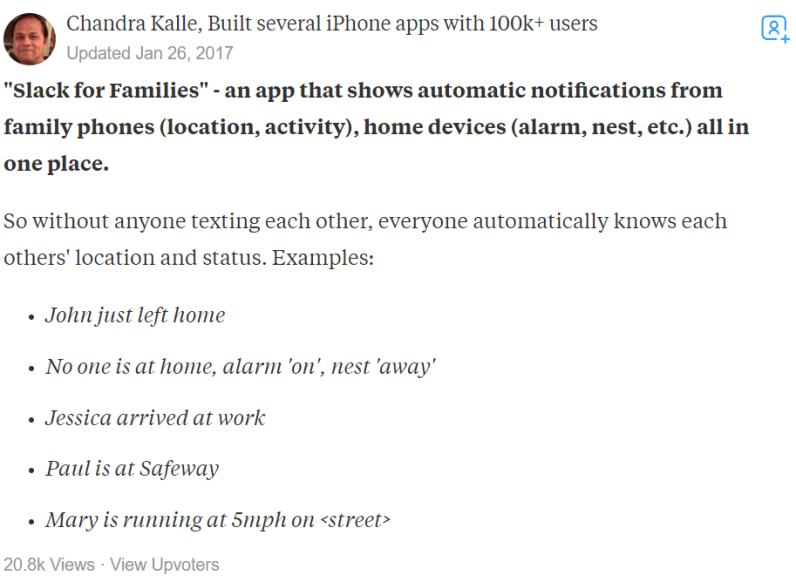Everyone knows that apps fail. No one wants to build a mobile app that gets one thousand downloads and then capsizes into the app store abyss. So how do you make sure that your app won’t turn into one of those depressing statistics? How do you create a winning product that’s adopted by millions of users?
As a mobile app industry veteran, I’ve found that what sets many successful apps above the rest is the way they address a deep-seated need or desire users have. In other words, they solve a problem.
What is a mobile app’s greatest advantage? A hungry audience
When mobile app professionals are asked this simple question: “What do you think is the best advantage that a mobile app can have?” Most people will respond by saying, “offering a feature that is totally new and innovative” or maybe even “taking a concept that was originally just for desktop and successfully bringing it to mobile.” These are all fair answers, but the truly biggest advantage that one can have in the mobile app economy blows all of these answers out of the water.
The truth is that a team of mobile app creators who successfully identify a ‘hungry’ audience that isn’t getting a particular need or needs met is sure to increase their chances of a more successful business going forward. A hungry audience demands something that the current marketplace isn’t offering. This could be a pain that they want to solve, a problem that they want to fix, or a biological urge that they need to have fulfilled.
The best business models always begin with a hungry audience. This is crucial to keep this thought in mind during ideation and pre-launch, since you have to make sure that your mobile app is going to satisfy a real need that your audience can’t currently solve on their own.
To determine if your mobile app concept will satisfy a real market need of users, be sure to ask yourself and your team the following questions inspired by Adobe’s digital marketing team:
- Does this audience need a mobile app?
- Will this group of people be able to take away more value from our app than they can currently get anywhere else?
- Can we influence customers to download this app?
Once you have narrowed down an idea that “works” with those questions, you still have to maximize the odds of your mobile app idea being a successful one. I’ve listed a few strategies to help you create a pre-launch concept that solves real problems in the mobile app economy today.
1. Improve existing solutions
Successful appreneurs openly admit that copying what works and putting your own useful spin on it is one of the most effective ways to building a winning brand. This is because if an existing solution is already successful, then a market demand has already been validated for you.
Of course, the trickiest part of copying what works involves identifying the “value add” – how you’re going to solve an audience’s needs better than your existing competitors. Plus, there are some other factors to take into consideration like current market share, switching costs, and barriers to entry. But, for the most part, improving existing solutions is one of the ‘safest’ methods for solving real human problems and developing a winning product.
For example, just consider the level of competition in the mobile app industry today. App creators scour through app store categories in search of poor-performing apps that can be replicated and improved. Some even argue that there are no new ideas left, and that every new app release is an improvement of some previous product or a combination thereof.
At the end of the day, if you can build a UX that satisfies needs or delivers a range of emotions better than a product currently on the market, you will have created an app worthy of releasing.
2. Transfer existing solutions cross-country
Transferring existing solutions across states, countries, or even continents is one of the most effective methods of capitalizing on a market deficiency. Just about every multilingual creative has considered copying a popular foreign app, and localizing it for their home country’s market, or vice versa.
For example, a man once translated the Bible for a Spanish-speaking mobile audience, and eventually sold his app for five times the revenue (not bad).
3. Apply existing solutions to the mobile app industry
The mobile app platform provides a unique edge for meeting human needs largely because of how extremely convenient it is for consumers to access. Can you think of any existing products from any industry that can be improved by simply existing in a mobile app format? If so, then you can develop a winning mobile app concept because you will have created powerful “ease of use” for end users.
This is exactly what popular fitness and travel apps have done, such as MyFitnessPal and Almundo. Booking flights and managing diets are things we’ve been able to do on desktop for many years. However, we can do it instantaneously and on-the-go if we can do it on our phones.
It’s a lot easier to track macros if you have all your data available at a glance and can update meals while waiting at the water cooler. Finding hotels and restaurants online is great, but it’s even greater if you can do it while you’re already out and about. These are just two examples of actions that become so much easier to do on a mobile app than on desktop.
4. Address market pain points
Many mobile app organizations have received funding for products in pre-launch simply because they addressed a highly-specific market pain that no one else was addressing. This is why it’s crucial to speak with persistent app users, and chat with them about the everyday pains that they face in life.
Some people like to find market pain points by searching social media for unhappy customers. It’s fairly easy! If you start paying attention to why people become upset with products, and begin writing down the various ways to solve their problems, you can easily build a massive list of mobile app opportunities.
For added inspiration, I enjoyed seeing how some users from Quora responded when they were asked questions like, “What everyday problems do people wish an app could solve?”


Conclusion
The apps we’re most likely to use are the ones that make our lives better. You probably have quite a few apps on your phone, but does that mean you don’t have problems? Of course not!
Maybe not all your problems can be solved with an app, but perhaps some of them can. Humans will always have more problems, but for app entrepreneurs, that’s good news: the next great idea is just around the corner.
Get the TNW newsletter
Get the most important tech news in your inbox each week.





